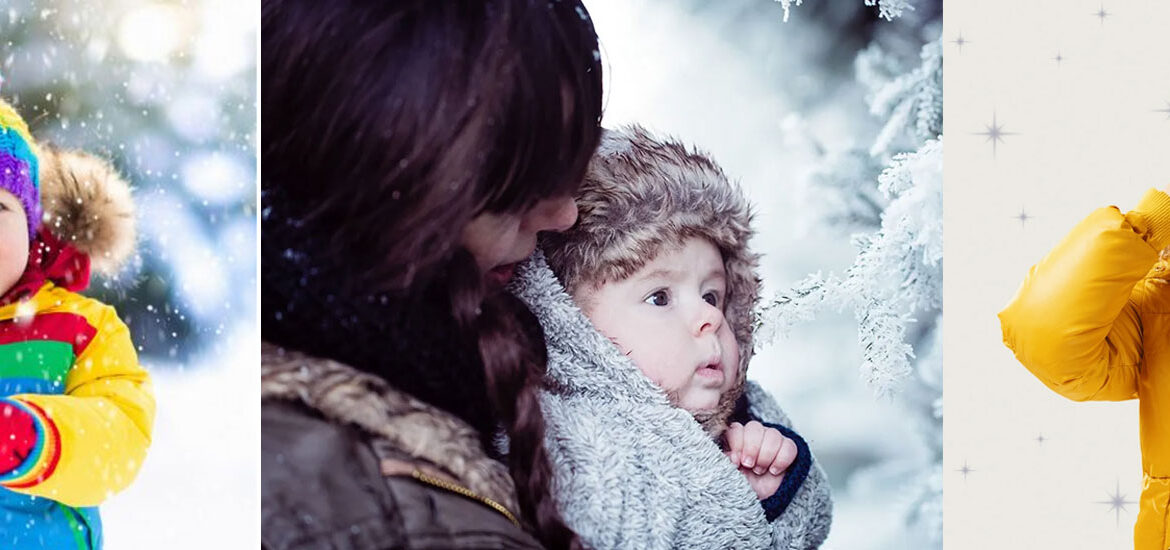In order to keep a newborn warm in the cold, you’ll need more time, layers, clothing, and patience. When the weather outside is awful, it’s crucial to wrap your toddlers and older children in blankets to keep them warm. Infants and toddlers are less able to regulate their body temperatures, making them more sensitive to the cold when the weather cools.
1. Lay thin layers of clothes
Your toddler’s clothing has layers below it that trap heat. Choose shirts made of cotton, merino wool, or lightweight polypropylene that are kind on your child’s delicate skin. Avoid bulky sweaters, since they will make her overheat and make it difficult for her to move about. Make sure your toddler’s snow boots aren’t too tight over his or her socks.
Base Layers (the layer that sits directly on top of your child’s skin)
- What it does: it wicks moisture away from the body.
- Wool or synthetic textiles, such as polyester, are the materials to search for.
- The ideal fit is tight.
Layers in the Middle (Goes over the Base Layer)
- Its function is to insulate.
- Wool, down, or fleece are some of the materials to search for.
- The ideal fit is near to the body but not so tight that it restricts movement.
The outermost layer
- What it does: shields your youngster from the elements such as rain, snow, and wind.
- Look for the following materials: a waterproof jacket or shell; breathable clothing (such as Gore-Tex) is essential if your kid will be actively active.
- The ideal fit: allows for effortless movement and enough of layering space.
2. Consider the ability to withstand water
If you reside in a region where winter precipitation (rain, snow, or ice) is common, you should invest in water-resistant clothing. Winter coats and jackets for toddlers that keep the heat in while preventing moisture from seeping in from the outside are the finest. A water-resistant zipper or a protective flap over the zipper is included in certain waterproof winter clothing.
3. Choose the best fit for your child as he or she grows.
Babies and toddlers develop quickly. Your small one will probably not be able to wear a coat for more than one winter. Buying a size bigger for toddlers or big kids may allow you to wear the coat for two seasons, but make sure it’s not so huge that it hampers movement or looks baggy. Another thing to keep in mind is that while buying toddler winter clothes a size larger may allow your child to develop comfortably, any additional space in a winter coat means less heat is maintained. If you buy a size larger, layer your child beneath to keep them warm.
4. A warm hat is essential
Because the head loses a significant amount of body heat, a hat is an essential part of a child’s winter clothing. (This is especially true if your sweetheart doesn’t have a full head of hair yet.) Even if her snowsuit includes a hood, a tight-fitting hat is a preferable option for keeping her head warm (you can always pull the hood over the hat). The best cap is fleece-lined cotton or soft-wool knitted cap with ear flaps that fastens beneath the chin.
5. Consider the clothing’s weight
While a thick, heavy winter coat may offer adequate warmth, it is more confining and may be more unpleasant for your child than layers covered with a jacket or lightweight fleece coat. Little ones starting to walk may find it difficult to move about in a bulky winter coat, but larger jackets might provide enough warmth for your toddler if you intend to be outside for lengthy periods of time or are going on a winter ski vacation.
6. Don’t overlook the importance of car seat safety
Remove your toddler’s winter jacket from the car seat, even if it’s really cold: In the case of an accident, it might collapse, leaving a hazardous amount of space beneath the harness. Thin layers, mittens, and caps are still acceptable in the car for keeping her warm and comfortable. If your child is still cold once she’s belted up, you can put a lightweight blanket over her.
7. Overheating should be avoided
Another advantage of layering your toddler’s clothing is that it will insulate them from the cold winter temperatures while also allowing the upper layers to be readily removed if your youngster becomes too hot. If you feel comfortable in a light jacket or a fleece sweater in the winter, your older children should feel comfortable in similar cold-weather apparel. In fact, smothering your youngster in too many clothes may make him or her feel colder. That’s because if your youngster becomes too hot and starts sweating, their garments will get wet, enabling cold air and wind to cool them down.
8. Cover up yourself
When it comes to safeguarding your child from the weather, whether it’s chilly or hot outside, sun protection is one of the most critical considerations. 15 to 30 minutes before going outside, apply sunscreen. Every few hours, it should be reapplied.
9. Socks that are warm
Maury Beeler like socks produced with a combination of angora fiber (from rabbits), which is warmer and lighter than wool. She also suggests wearing many pairs of socks (a pair of synthetic socks under a pair of wool ones, for example).
Because of their smaller bodies, younger children are more vulnerable to cold. Younger children are also less likely to notice they’re feeling chilly, so it’s up to us parents to keep them warm (and recognize the indications that it’s time to go inside). In addition, clothing newborns and children for the cold is an art form. Whether they’re going for a stroller ride, a trip to the park, or accompanying you to the shop, our winter wardrobe recommendations ensure they’re not too hot, not too cold, but just perfect.

